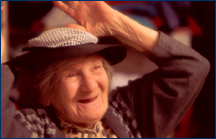To date, over 6.1 million children have been diagnosed with attention deficit hyperactivity disorder (ADHD). While that may seem like a significant number, plenty of factors contribute to the implication that ADHD may be underdiagnosed.
The rise in cases could be attributed to the fact that the stigma behind ADHD is finally disappearing. Because more treatments are becoming available and more people are speaking out about their experiences and opening up to other?s experiences, ADHD can finally become a topic of conversation. With it will come the reasons for underdiagnosis and potential remedies for those getting a later start at managing their ADHD symptoms.
Demographics in Underdiagnosis
While not an exhaustive list, some demographics might find themselves more underdiagnosed than white males. ADHD can be underdiagnosed in these categories because their symptoms may not manifest in the same way or because the patient is in an overlooked group within the medical field.
1. Underdiagnosis in Females
Even among white children, more boys are diagnosed with ADHD than girls. The reason for this may be that symptoms don?t always manifest the same way. While a boy may be more likely to have impulsivity and act out, a girl may not demonstrate the hyperactivity component of ADHD and only display the inattentive symptoms.
However, ADHD manifests in other ways: low self-esteem, constant worrying, detrimental perfectionism, and excessive talking, to name a few. Because ADHD has been thought of as having a specific set of symptoms, medical professionals may overlook how other symptoms appear in other children.
2. Underdiagnosis in People of Color
Medical topics tend to ?default to white? ? meaning they tend to assume that the hypothetical patient is white unless proven otherwise. White children are diagnosed with ADHD at a rate of 11.5%, whereas African American children are only diagnosed at 8.9%, and Latino children are even less than that.
AdditudeMag reported that, compared to white children, African American children were 69% less likely to receive an ADHD diagnosis by the time they reached eighth grade. Because of stigma in the medical field and the misinformed stereotypes of neuroatypicality in people of color, their treatment and diagnosis may be overlooked.
3. Underdiagnosis in Adults
It?s no surprise that adults are diagnosed with ADHD less frequently than children. Not everyone ?grows out of? or learns to manage ADHD by the time they become adults, though. Some people have to deal with inattentive symptoms for the rest of their lives without a diagnosis.
Simply put, medical professionals may be more likely to relate ADHD symptoms to other disorders in adults. Because other conditions seem to be more prominent, it?s easier to attribute ADHD symptoms to a more common disorder. While ADHD in adults is very much a reality, the problem is that their worries are often brushed away and diagnosed as something else, such as anxiety or depression.
4. Underdiagnosis in Children
Though children are diagnosed with ADHD more often than adults, obstacles still stand in the way of every child receiving the diagnosis they need. Many parents are still closed off to the idea of ADHD, believing that their children are just energetic or fidgety rather than looking into ADHD.
Most kids will grow out of their seemingly endless energy, but children with ADHD may experience it for a lifetime. Around one-third to one-half of patients will carry their ADHD symptoms into adulthood, making them ill-equipped to manage their symptoms as adults without help.
Managing ADHD in Folks Without Medication
Not everyone wants to take medication to regulate their symptoms. Some people might perceive the medication as dangerous for their loved ones even though the benefits of managing symptoms outweigh the risks of the medication. For that reason, a person with ADHD can find other ways to manage their symptoms with the help of professionals.
1. Make Sure They Stick to Routine
Having a routine can allow someone to stay organized. If a person with ADHD sets up a routine of cleaning their cluttered space every so often, they will have a clearer mind. Adhering to routines can allow people to accomplish more tasks and goals ? and they aren?t on their own. Medical professionals can encourage people with ADHD to utilize tools like planners or digital reminders to hold them accountable and help them stay on task during the day.
2. Refer Them to Therapy
Therapy can work wonders for someone suffering from executive dysfunction. A professional can guide a person with severe ADHD symptoms through their life and teach them tools that will help them better regulate their days. Through cognitive behavioral therapy, people with ADHD can turn their bad habits into positive ones by changing their mindset of a situation.
3. Change Exercise and Sleep Patterns
By allowing a child ? or even an adult ? to express themselves through exercise, some of the pent-up energy will have a release. That extra energy contributing to fidgeting can be expelled in a constructive way that is good for the person?s body and mind.
Similarly, even a half-hour of extra sleep can contribute to a healthier mindset for people with ADHD. By having a more restful night?s sleep, a person will experience less restlessness when sitting still, such as in a classroom or office setting.
4. Consider Other Lifestyle Modications
You may find that there are other ways to deal with ADHD, such as helping people change their education and work routine. For example, some people have found that cyber schooling has made it easier for people with this condition.
Crushing the Stigma of ADHD
ADHD can be detrimental to a person?s lifestyle if left untreated ? and even more so if they can?t receive a diagnosis. By fighting back against the underdiagnoses of ADHD and advocating for treatment in adults and adolescents, medical professionals and people with loved ones who have ADHD can pave the way for a future where all folks get the treatment they need, regardless of their demographics.









